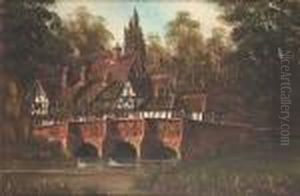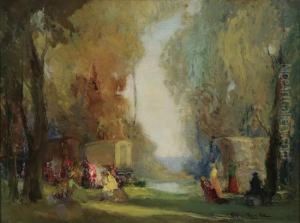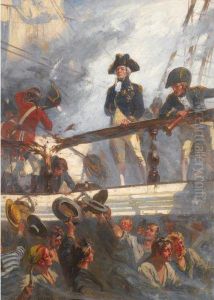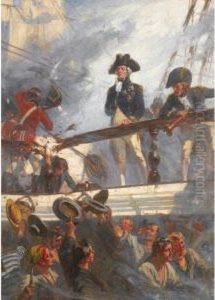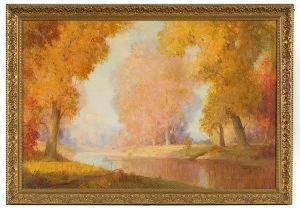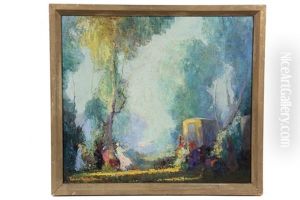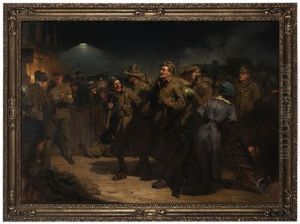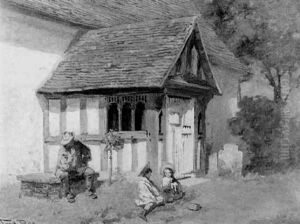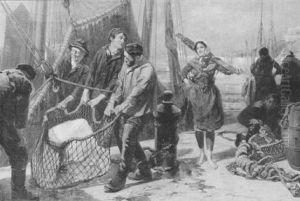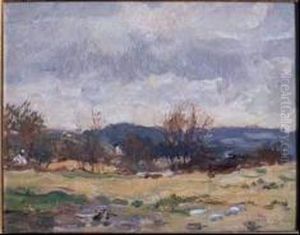Frederick Rushing Roe Paintings
Frederick Rushing Roe was an American artist known for his landscape paintings, portraits, and genre scenes. Born in Fayetteville, New York, in 1864, Roe developed a fascination with art at a young age. Despite the lack of extensive formal training in his early years, Roe's passion for painting drove him to pursue a career as an artist.
Initially, Roe worked in a realistic style, capturing the natural beauty of the American countryside. He was particularly drawn to the rural landscapes and pastoral scenes of his native New York state, which would feature prominently in his oeuvre. As his career progressed, Roe's style evolved, showing influences of the Impressionist movement, which was gaining popularity during his lifetime. He adopted a looser brushwork and a brighter palette, which allowed him to capture the fleeting effects of light and atmosphere in his landscapes.
In addition to landscapes, Roe was also known for his portraits. He had a keen eye for capturing the essence of his subjects, often portraying them in natural settings that complemented their personalities. His genre scenes, which depicted everyday life in America, were celebrated for their narrative quality and attention to detail.
Roe's work was exhibited in various art shows and galleries throughout his career. He was a member of several art organizations and his paintings were well received by both critics and the public. Despite the recognition he received during his lifetime, Roe remained a relatively modest figure in the art world, dedicated to his craft rather than seeking fame.
Frederick Rushing Roe passed away in 1947. Today, his paintings can be found in private collections and occasionally come up for auction, where they continue to be appreciated for their contribution to American landscape and genre painting. Roe's legacy lives on through his art, which captures the spirit of America at the turn of the 20th century.
